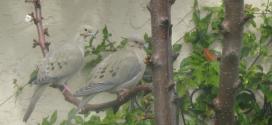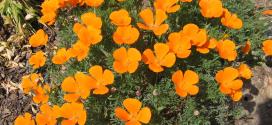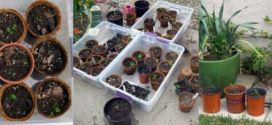Bigleaf Hydrangea, French Hydrangea. Up until recently, if you wanted a blue Hydrangea, you needed acidic soil; otherwise it was pink. Toxicity: Toxic to Dogs, Toxic to Cats, Toxic to Horses Toxic Principles: Cyanogenic glycoside Clinical Signs: Vomiting, depression, diarrhea. Cyanide intoxication is rare – usually produces more of a gastrointestinal disturbance. Family: Hydrangeaceae (hy-drain-jee-AY-see-ee) (Info) Genus: Hydrangea (hy-DRAIN-juh) (Info) …
Read More »admin
Mourning Doves
Mourning Doves are a wonderful visitor to your garden. The males sing the distinctive song. The doves tend to mate for life. I have seen the young doves fed from the crops of the parents. The doves are very sloppy nest builders: A few sticks; a few inches; eh, fine enough.
Read More »Native plants
Native plants such as poppy or ceanthus, sollicitudin volutpat at libero litora, non adipiscing. Nulla nunc porta lorem, nascetur pede massa mauris lectus lectus, in magnis, praesent turpis. Ut wisi luctus ullamcorper. Et ullamcorper sollicitudin elit odio consequat mauris, wisi velit tortor semper vel feugiat dui, ultricies lacus. Congue mattis luctus, quam orci mi semper ligula eu dui, purus etiam …
Read More »Growing from seed
In the dark, dark days of winter, you are visited by the sirens of seed catalogs. Instead of tropical beaches, you see lush produce. I used to use peat pots for the seedlings but now I use coconut coir pots. The Coir people make the case that peat is a relatively finite resource. Both peat and coir providers tell you …
Read More »Birds
My garden has over a dozen species of visiting birds. Anna’s hummingbirds – If you add a hummingbird-feeder, you will have them year-round Lesser Gold-finches – they like the small niger seed House Finches (aka Rose finches) – they like the small niger seed plus larger seeds up to sunflower size Oregon juncos Chestnut-backed Chickadees Bewick Wren Scrub Blue Jays …
Read More »Squirrels
Question: When are your apricots ripe? Answer: The day the squirrels discover them. Squirrels and Humans find many of the same fruits delicious. Squirrels will eat most stone fruits (apricots, cherries, plums, etc). Also apples, pears, tomatoes. You look out of your kitchen window and see the squirrel eating your apricot on the back wall. Or you will see a …
Read More »Bees
tbd
Read More »Wildlife
tbd
Read More »Cherries
tbd
Read More »Vegetables
tbd
Read More »


